Transcription
BTB #18 1/19
With consecutive 25 yr to life sentences, I long ago lost hope of ever getting out of prison. Yet it's evident in the Commendations and Certificates I've earned over the years, that I haven't lost faith in my ability to contribute to rehabilitation activities - for others benefit.
It was a privilege for me to even create an SPO study group which truly impacted a number of prisoners and volunteer ministers who continue to help others help themselves. This Volunteer Ministers Helping Prisoners program will certainly grow into its ideal scene with VM teams entering their local prisons and juvenile detention centers, etc to deliver interactive seminars toward self awareness and its corresponding responsibilities, so I'm very proud of this achievement.
Several other groups of volunteers have introduced their own rehabilitation programs here at MCSP these past few years, while I've tried convincing volunteer ministers from Scientology, that a new era of restorative justice now permits outside agencies - both religious and secular - to enter prisons and deliver their rehabilitation services. But I think maybe there is confusion in this regard, impeding the VM team salvage campaign.
Nevertheless, I've made introductions in the past, to help develope reality of this situation, by coordinating relationships with existing pioneers who are willing to help aspiring volunteers. (Stephanie Charbonneau - avpstocton@gmail.com). Stephanie @ Stocton AVP was one such pioneer who agreed to share knowledge about the administrative process - and relevant legislation permitting volunteers to deliver rehab services to prisoners. And now today (2.16.19), I attended another new group of volunteers - including a guy still on parole! Dave Sloane married the creator of Life Support Alliance, Vanessa Nelson, and today they shared the following material (18 pg). As you may view for yourself on their website www.lifesupportalliance.org, or lifesupportalliance@gmail.com, they too are ideal advocates to contact for ANY volunteer ministers interested in entering prison salvage campaigns. Something CAN be done about it! Credentials of ministry are obtainable from www.ulchq.com.
For the love of truth.
Be blessed
The best way to find yourself is to lose yourself in the service of others.
- Mahatma Gandhi
The temple of Truth is approached by the pure in heart, and entered by those who serve but one master, which is Truth.
- "The Science of Mind", page 436
LIFE SUPPORT ALLIANCE
A California Lifer Newsletter
Public Safety and Fiscal Responsibility
www.lifesupportalliance.org
WHO WE ARE, WHAT WE DO
Life Support Alliance is a non-profit prisoner advocacy group focused on the needs and circumstances of life-term prisoners and their families in California. Our primary purpose is to assist lifers in understanding the parole system and becoming suitable for parole and helping them find the resources to do so.
Our primary method of accomplishing this is through our newsletter, the free, monthly Lifer-Line, and our larger subscription newspaper, California Lifer Newsletter. We also conduct seminars for lifer families throughout the state to provide families with information, insight and support.
We sit as stakeholders on various CDCR workgroups and provide a voice and face for lifers in the legislature, the state government and the public. We are not attorneys and cannot offer legal advice, nor do we operate reentry facilities, provide employment or write support letters.
We do attend parole hearings as observers, monitor proceedings and testify at both personnel confirmation hearings and legislative bill hearings. We also offer transcript reviews, explanations on bills and policies and general lifer-centric information.
WE CAN
* Help you understand the parole process
* Bring your concern to the appropriate agency
* Provide you with materials explaining new legislation, policies and procedures
* Help you family learn how to help you
* Advocate for lifers on all issues and levels
WE CANNOT
* Provide legal advice or counsel
* Perform legal or internet research
* Provide quarterly packages, pen pals or purchase postage stamps
* Contact your family or file complaints
* Provide copies of case law or court decisions
Lifer-Line free newsletter
If you have someone on the outside who can receive the newsletter by email, then print and send to you, please have them contact us at lifesupportalliance@gmail.com and ask to be included on the mail serve list.
If you have no one who can mail Lifer-Line to you, you can ask to be added to our volunteer mail waiting list. We have volunteers who provide this service for inmates. Currently, we have more inmates wanting newsletters than volunteers to accommodate them, but we can place your name on a waiting list and as we acquire more volunteers your name will be assigned for mailing.
Please provide the following information to be placed on the mail tree:
Name
CDCR #
Prison
Housing
PO Box/address
City and Zip
CALIFORNIA LIFER NEWSLETTER
SUBSCRIPTION FORM
Inmate Name
Enclosed $
CDCR #
Housing
Prison
Address
Zip
Subscription rates: Inmates: 1 yr $35, 2 yrs $60, 3 yrs $90 (or 5 books of stamps per year)
Others: 1 yr $99, 2 yrs $180
Back issues (if availablee) $6 or 20 stamps
Mail to: LSA/CLN-Attention Subscriptions PO BOX 277, Rancho Cordova, Ca 95871
Please note, we do not provide free, indigent or 'sample' copies of CLN.
THE AMENDS PROJECT
To make amends is defined as to change for the better. The goal of The Amends Project is to assist and guide the inmate in taking an important step in that process by expressing their apology and remorse for their crimes to those most affected, the crime victims and/or family members in an appropriate manner.
The Amends Projects is rooted in the principals of Restorative justice, an approach to corrections that focuses on the needs of victims and prisoners, as well as the involved community, rather than the process of satisfying abstract legal principles or simply punishing the inmate. It is based on a theory of justice that considers crime and wrongdoing to be an offense against an individual or community, rather than the state.
Prisoners are encouraged to take responsibility for their actions as part of repairing the harm done through their crimes. Restorative justice also provides tools and understanding to help prisoners avoid re-offending. The purpose of restorative justice in prisons is to assist with the prisoner's rehabilitation, and eventual reintegration into society by repairing the harm that resulted from the crime.
Restorative justice seeks to understand and address the circumstances which contributed to the criminal behavior in order to prevent recidivism once the prisoner is released. The potential for restorative justice to reduce recidivism is one of the strongest and most promising arguments for its use in corrections. Victims who are active participants in the restorative justice process often feel their rights and interests have been better protected when they are able to participate and have some influence on the proceedings and outcome.
The Amends Project consists of two parts. First, the inmate will attend a two-hour Amends Letter writing workshop. Secondly, they will write an amends letter and submit that letter to LSA for review and approval.
At the workshop the inmate will gain an understanding of the importance of writing an amends letter for the victim and for themselves, as well as proper construction for correspondence and appropriate ways to express their amends. Topics will include responsibility and accountability for their crime and the harm they caused will be discussed, as well as remorse and making amends. Time will be spent discussing how to write an amends letter, what should and should not be included and why, as well as a basic letter format. Once the inmate completes a draft letter it can be sent to LSA for review, comment and rewrite if needed.
When LSA receives a letter from an inmate it will be reviewed for appropriateness by specially trained staff, who will offer comments and suggestions before returning the letter for a re-write, if needed. Up to three drafts may be submitted before the effort is deemed a failure. If the inmate wishes to proceed they then must repeat the Amends Letter Project workshop. A certificate of completion will be issued to the inmate when their letter has been approved and accepted. The certificate may be placed in their C-file and be included as part of their packet for to the Board of Parole Hearings.
Interested groups or sponsors may contact LSA at PO Box 277, Rancho Cordova, Ca 95741 or via email at: lifesupportalliance@gmail.com
LIFERS AND WIFERS
Now in development, Lifers and Wifers is an in-person discussion group lead by paroled lifers and their wives, parents or significant others, who discuss, with soon-to-parole lifers and their closest family members, the challenges, often hidden and surprising, that will face both the parolee and his/her family members. Rehabilitation does not end with release from prison, but simply enters a new phase, which includes reentry into a society often vastly different than the one the former prisoner left behind.
As challenging as that situation is for the paroled lifer, the stress and surprises are equally impactful for those waiting for his return. The first lesson of Lifers and Wifers is "There are things out here that you don't know, and we don't know that you don't know them."
Drawing on experiences of those now successfully paroled and their families, homecoming lifers and their families are alerted to some of the surprising and seemingly unimportant issues and circumstances that can cause difficulty, misunderstanding and stress. Lifers and Wifers is currently the only program directly addressing these issues, issues which often cause the first major upheaval in a paroled lifer's journey back into society.
The program is expected to be available in Fall, 2017.
CONNECT THE DOTS
GETTING STARTED
The process of self-examination is difficult, but necessary to find and understand the root causes of old feelings, beliefs and even fears, the things that motivate our actions. But this is where suitability starts, understanding the causative factors (what made you throw that tomato) of your crime (the tomato stain) and why those factors made you believe your actions (throwing the tomato) was the best way to solve your problem (insight).
Events effect emotions, which affect beliefs and attitudes, which influence decision, which often result in extreme actions that can culminate in personal and societal disaster of huge impact, at once predictable and yet unforeseen. It has happened thousands of times and continues to happen hundreds of times each year. Understanding where the emotions come from breaks the chain.
Connecting the Dots is designed to help you identify those events, the 'dots', of your life that caused your feelings (emotions) and how they connected to your thinking, developed your belief system, that authenticated your actions as the best course for you to take in any given situation. When beliefs are anti-social, criminal actions can result. The factors won't be the same for everyone, but many of you will share similar 'dots' throughout your life and some of your patterns will overlap.
In the first session, we will explore what past life-events elicited basic emotions and how those emotions, especially in early, formative years, may have contributed to an anti-social belief system. First person examples of identifying the event -> emotion/belief -> behavior pathway are presented as 1) illustrative of events and the resulting actions they can lead to, 2) how to bridge the understanding between emotions and actions and 3) establish a commonality of experience and creditability. Participants attending will be encouraged to journal their personal experiences as a way of identifying and examining their 'Dots'.
The second session will explore how to analyze those emotions and connect them to how anti-social beliefs and actions developed. Once identified, how to understand and debunk the faulty, anti-social beliefs and use cognitive behaviors and methods to combat destructive emotional responses is introduced.
This understanding facilitates the development of insight. Psychologists, who rarely speak in a direct manner, define insight as "the recognition of sources of emotional difficulty" and "an understanding of the motivational factors behind one's action, thoughts or behavior". In short, what caused you to believe your best option was to commit a crime; what happened in your life that changed your thought process to believe breaking the law was the right path.
And perhaps more telling, psychologists equate insight with self-knowledge, and an understanding of cause and effect based on identifying relationships and behaviors in any given situation. Understanding those relationships sheds light on, and helps solve, problems. So if you have insight, you've been able to identify events in your life that caused you to be who you were when you committed a crime.
The 5 Dots to connect
1. Identifying the event: What are the ACE events of your life
2. Identifying the feeling or belief the event caused: How did that event make you feel or what did it cause you to believe
3. Connecting that dot to your pattern of behavior or reaction to similar feelings/situations: What behavior did that feeling/belief cause you to adopt
4. Connecting that behavior to your criminal actions: How did that pattern of behavior or reactions feed into your criminal actions
5. What have you put in place of those habitual reactions in those situations now: How have you learned to change your behavior and reactions to stressful events and what do you do now in similar situations
CONNECTING THE DOTS
Every action has a lasting effect. If you throw a tomato against the wall, the lasting effect of that is a tomato stain on the wall. That's the effect, but what was the cause? You're dealing with the lasting effects of your anti-social actions right now, being here, in this prison.
But what caused those anti-social, criminal actions? Some of the reasons can be found in what psychologists call Adverse Childhood Experiences (ACE). They don't have to be as obviously traumatic as abuse, molestation or neglect, though those are some examples of ACE events.
These ACE events are not always of major abusive quality, but to you and in your environment at the time, they were highly impactful to your perception of the world. Events trigger emotions, emotions build beliefs and beliefs lead to actions, because we act on what we believe.
Connecting the Dots will help you identify those things (events, emotions, situations, experiences) in your backstory, what the board calls causative factors, that began to make you think and act in anti-social ways. Once you identify those events and examine the emotions and thoughts they brought to you, you can begin to see the impact those emotions and beliefs had on your actions. It's not the excuse for why you did what you did, but the reasons that your actions seemed, then, a viable option for you.
Why? Because you'll need to understand this for the board; more importantly, you'll need to understand it if you're going to be successful in rehabilitation, and, of primary importance you'll need that understanding if you're going to reenter society. We need you to come home better than you left, and if you don't understand why you felt you had to over-step society's bounds, you'll be a constant danger of doing it again.
The parole board wants several things of you; mostly, they want to be sure you won't commit another crime. They hope to be reassured of this if you understand 'the causative factors of your crime', what made you do what you did. And the answers aren't easy; you can't just say I was angry, I was insecure, I had low self-esteem, I hated my father. Ok, but if you hated your father, why did you kill someone else, not related to that situation?
You can't begin to understand the "causative factors of your crime" until you go back to what caused your thinking, your feelings, to be outside lines of society. Because the events of your life caused your feelings, which led to your thinking, which developed your belief system, which rationalized your actions as the best course you could take in any given situation. What you think, you believe, and what you believe, you act on.
Knowing how the dots connect and knowing how that pattern of dots connected to create such an ugly picture will help you re-draw those connections into a picture of someone able to cope with emotions we all feel; stress, anger, fear, without resorting to violence. Someone who is no longer an unreasonable risk of danger to society. Someone suitable for parole.
[CRIME SCENE - DO NOT CROSS]
Childhood feelings can translate into anger that is sometimes transferred, leading some to act out in school, in the community and often in crime, defying that ultimate authority figure, police. Some often 'live up to expectations', allowing themselves to prove to society that they're just as bad, or worse, than society seems to think they are.
Abandonment issues are prevalent, even in children who were adopted into loving families, leading to feeling of inferiority and resultant actions in trying to prove their importance, to 'be somebody'. Everyone wants to be someone, not just another face in the crowd.
Early and frequent exposure to violent surrounding often fosters the belief that violence is normal, so that it becomes an acceptable part of behavior. If stability was lacking, either through frequent moves or repeated relocations 'loner' tendencies often develop, leading individuals to think they must solve every problem themselves, by whatever means available, even violence.
If substance abuse was commonplace among family or friends it can become normalized and just what 'everyone' is doing. Clouded thinking and behavior uncontrolled through substances, while a causative factor, is not an excuse for criminal behavior. It may help explain why you did what you did, but it doesn't give you pass. Substances often remove any remaining inhibitions on behavior and, while they may expedite extreme actions, they aren't the root cause.
But they can eliminate inhibitions and allow you to give yourself 'permission' to act in ways you know aren't acceptable, let alone legal, but will somehow ease your emotions. Substance abuse contributes to crimes but is seldom the base, as some emotion has usually lead to the use of substances for self-medication - something, some feeling or emotion, led to substance abuse.
Whatever 'dots' caused your thinking, your value system to become distorted and outside the norm, you can identify them and understand their effects on your actions. More importantly, you can develop tools to help you deal with the feelings that first caused these faulty beliefs, so that you don't resort to the sort of anti-social, criminal activities that once appeared to provide at least temporary solace for those uneasy, unpleasant feelings.
A cautionary word: just because you can identify the root causes of your anti-social actions doesn't mean you get the brass ring in the form of a parole grant. You still must understand and explain how those factors affected you and shaped your beliefs, how those distorted beliefs lead to your actions and how you've changed those beliefs, and through your new mindset and rehabilitation tools, changed your behaviors.
The work has just begun.
BACKGROUND AND INTRODUCTION
We know exposure to certain experiences in your childhood, what the experts call Adverse Childhood Experiences (ACE), can impact the way you think and your perceptions of what is acceptable and workable for you. Many of you have had these ACE experiences, often without even recognizing them or being able to decipher their impact on your consciousness then and your actions later.
Everything has a cause and effect, as well as after-effects. If you decide to throw a tomato at the wall, the effect will be a tomato stain on the wall. But the cause isn't just that you threw the tomato, but why you threw it. Hopefully it wasn't just because you wanted to see a red stain on the wall. But why?
[drawing of tomato splatter]
Did you need to exercise your arm and it was the only equipment available? Trying to kill a spider on the wall? Felt an irresistible artistic urge to try a new decorating technique? Whatever the reason, something made you believe flinging that tomato was the right thing to do, your best and most viable option at the time to address the problem at that moment. And why did throwing the tomato seem to be the best solution to any of those potential problems? What was the basis for that belief?
The immutable consequence of that action, taken for whatever reason, is that you now must deal with the tomato stain on the wall, and whether you like it or not, that tomato stain is probably not ever completely going away.
[tomato splatter]
The process of self-examination is difficult, but necessary to find and understand the root causes of old feelings, beliefs and even fears, the things that motivate our actions. But this is where suitability starts, understanding the causative factors (what made you throw that tomato) of your crime (the tomato stain) and why those factors made you believe your actions (throwing the tomato) was the best way to solve your problem (insight).
Events effect emotions, which affect beliefs and attitudes, which influence decisions, which often result in extreme actions that can culminate in personal and societal disaster of huge impact, at once predictable and yet unforeseen. It has happened thousands of times and continues to happen hundreds of times each year. Understanding where the emotions come from breaks the chain.
This workshop is designed to help you identify those events, the 'dots', of your life that caused your feelings (emotions), and how they connected to your thinking, developed your belief system, that authenticated your actions as the best course for you to take in any given situation. The factors won't be the same for everyone, but many of you will share similar 'dots' throughout your life and some of your patterns will overlap.
[connect the dots puzzle]
Each of you must think through what your dots are and how they connected in your case to create such an ugly pattern. Then you can take the steps that will help you re-draw those connections to a picture of someone able to cope with the emotions we all feel; stress, fear, anger, without resorting to violence.
Someone who is no longer an unreasonable risk of danger to society. Someone suitable for parole.
FINDING YOUR DOTS
The objective is to learn about yourself, through YOUR life story. It will be a personal narrative, and there are reasons for writing it down.
Writing makes it real, personal and organized, which you'll need, to take your story to the board. It also solidifies those memories, and makes it harder for you to continue to ignore them. It's hard not to act on something staring you in the face.
It's OK if the first effort is jumbled and disorganized - it will get better. Writing also helps you become ready to talk about your life, your background, actions and what you've learned about yourself then, and now, to the board.
[drawing of an open book]
Begin with your earliest memories - not just the events, but how those events made you feel. You may not have been able to identify the emotion you felt at the time of the event, but looking back, you can now probably identify it, why you felt that way and what you wanted to do to deal with that emotion.
Remember that memory is fluid - time frames are distorted, images often disconnected. Looking back, you may now see the situation differently than you did at the time - that's evidence of growth and maturity. But it is your reaction to the event at the time, and the emotions it elicited from you then, that formed the basis for your thinking, beliefs and actions later on.
[melted clock]
Memory is also creative and self-protective; when the world is too chaotic or hurtful for the mind to deal with, memory will change the events to make sense of them and make them acceptable. One memory can often trigger another, even sometimes a memory that your mind repressed at the time, as a means of self-protection.
Do we know what we think we know? What experiences in your life, that seemed entirely normal at the time, can you now identify as damaging and undermining of a pro-social mindset and lifestyle?
Those events, good and bad, are the dots that charted your path. There are some cautionary signposts along this path, however.
You may have been the victim of abuse of various kinds, felt neglected, discarded by society, lived through shocking and unnerving experiences in your childhood and growing up. In fact most of you have. However, you cannot play the victim card in relation to your life crime. While all of those events and experiences influenced your thoughts and actions, they do not put you in the victim seat, do not excuse your ultimate actions.
[drawing of a devil in a person's head]
We are all the victims of hurtful and damaging experiences throughout our lives, but it's now we internalize those experiences and deal with them that are often reflected in our actions, pro or anti-social. Recalling, recognizing and ridding ourselves of those distorted attitudes and beliefs starts the healing process.
MEMORIES AND EMOTIONS; THE FRICK AND FRACK OF LIFE
Memories are unique to each of us, as are many of the things that impacted our outlook and actions. When you write your life journal, do it to the best of your ability and honestly. This story is yours, told from your perspective.
Take a look at your story, where are the gaps? What are the areas you didn't want to fill, because those times were too painful and embarrassing to acknowledge, let alone itemize? Those are the areas where your resentments and anti-social behavior begin. Those things that come to mind the first, may be the ones you want to hide the most. But the more you struggle to hide them, the harder they can be to articulate.
You are not alone, nor are your experiences so bizarre that no one will be able to empathize. Write your life, as you remember it. It may come in a rush or bit by bit, so we'll give you time. The first effort may be out of sync in time and disorganized, but as you reflect more, it will unfold in a more organized manner. And while each story is unique, there are some landmarks and sign posts you should include; your first memories of such things as:
* Substance abuse, you or in your home
* Violence/abuse, in home or neighborhood
* Relationships/events with parents/step parents/siblings
* Personal relationships/domestic violence
* When/why did you start carrying a weapon
* First criminal activity
* Success/lack of in school or society
* Stable family and home life
Also, include:
* Any problems you experienced because of those events
* Any actions you took to try to self-correct
* The results of those self-correcting efforts.
CAN YOU ERASE BAD MEMORIES?
No, but you can understand them and end their grip on your outlook, actions and life. That's the purpose of re-examining your life, to identify those things that led you down a path to criminal activity (your 'criminogenic needs'), understand how they influenced your beliefs and actions.
It wasn't the events themselves that led to your actions, but how they made you feel and what you believed you had to do to deal with those emotions that are at issue. No one has a perfect childhood, upbringing, life. To be successful in this venture, you've got to look honestly and objectively at your life history. Where you were led, to here you are.
EMOTIONS 101
[row of emoticons]
BASIC EMOTIONS
Scientific studies have identified a few basic emotions that are 'hard-wired' in humans, basic emotions appear to be built-in to allow us to survive over the millennia. Many are variations of each other, some studies list two, good and bad; others list up to 8. Whether two or 8, basic emotions seem to boil down to variations on happiness, sadness, fear and shame/disgust.
Of the memorable events in your life, what emotions do you associate with that event? Maybe you couldn't put a name to it at the time, but now, in retrospect, what emotions do you associate with those events? Events trigger emotions -> beliefs -> behavior.
ANGER - FUEL TO THE FIRE
[angry emoticon]
Where is anger, the big bully on the emotional playground? Anger is usually considered to be a secondary emotion, a fallback position to protect us and cover up vulnerability caused by one of the primary emotions. Anger usually follows, often within an instant, feelings of being attacked or frightened, offended or disrespected, trapped or pressured.
It's an all-purpose response, and many people can go from zero to 60 on the anger freeway in a heartbeat. Anger and rage (anger on steroids) are emotional accelerators; but when you learn to identify the underlying emotion, the causative factor, you can put the brakes on anger-induced actions.
The key is to identify the underlying emotion that lead to anger, and to be able to recognize that basic emotion (before anger takes over), situations that might cause that emotion and how you can deal with those situations and resultant emotion without letting anger drive you to anti-social, and often illegal, actions.
Don't say you'll never get angry; everyone gets angry. In a life sentence, it's not the time you do, but what you do with the time, and so it is with anger; it's not the anger you feel, but how you choose to respond to it.
STARTING YOUR PERSONAL NARRATIVE
[drawing of pencil and paper]
Your words, your experience, your time line. Start with the first memory that comes to you; as you write that experience down, other memories will follow. They may not be in chronological order; that doesn't matter. You can go back and re-organize your entries, if you choose to.
Write the events as you remember them. After you've made your list, go back and take a look at the result. Try to identify the emotion you felt then and what you wanted to do about that feeling. Are there patterns you can now identify? If there are events you don't want to recall, are reluctant to examine; those are probably the ones you need to delve into the most. Those are where your secrets lie, and as the saying goes, we're only as sick as our secrets.
If you can't quite put your finger on the emotion, below are some suggestions. And if anger is attached to any of those events, note that. While it may be a secondary emotion, anger is often the driving force behind actions.
[table of words for various emotions, at different intensity]
The five core emotions run left to right across the top of the table. Manifestations of each emotion based upon the intensity felt are described down each of the columns in the table.
ADVERSE CHILDHOOD EXPERIENCES (ACE EVENTS)
Begin with earliest memories -
* Memory of substance use,
* Abuse (physical, emotional, mental), neglect, lack of caring, ridicule,
* First time/s you saw violence in your home, abuse of any kind to any member of family,
* First time you used/drank/saw it in home
* First time you abused substance/another member of family
* First time you blacked out - witnessed others doing same
* Problems you had at home due to substance, including use by others
* Problems you had in school due to substance use
* Problems socially due to substance
* Relationship with parents/siblings - father/mother gone, used, abuser/abused
* First time you remember feeling inadequate, less than acceptable, who caused it
* Stable household - moved a lot? Encouraged to stay in school?
* Fights in school? Why?
* First time out of control from anger - why and what was result, what was feeling after the episode
* Jobs lost due to substance/anger/physical threats
* First relationships - short-lived, abusive on either side, substance-based
* Gang involvement - why, how did you feel, what prompted you to get involved
* Arrest history
How have you addressed these events/feelings?
* When did you realize you had a problem
* Groups/treatments you've participated in both in and out of prison
* Results - what has worked, what not
THE BIG 5: WHAT THE PAROLE BOARD NEEDS TO SEE
C 2017 Life Support Alliance
INSIGHT
Evidence that the prisoner has looked into his life history to discover how it got to be okay to commit his/her crime. Often this progression begins in childhood or adolescence, some event or series of events that cause the individual to become distrustful of authority and develop the feeling that he/she has to do everything to protect themselves. Figuring out what caused this mind shift and how it affected your outlook and actions leads to understanding of the causative factors of crime, which is the key to the next step, insight.
UNDERSTANDING/CAUSATIVE FACTORS
Having pondered the far-reaching effects the crime has had on the victims/victim family; own family; neighborhood; community; society at large. Actions taken do not only affect the persons involved but ripple throughout a community, a family. When you recognize the changes your actions have brought on many levels you can begin to have understanding of the impact you had and the damage done.
RESPONSIBILITY/REMORSE
Taking full responsibility for and expressing genuine deep sorrow for the damage created as evidenced in the hearing as well as other actions which were previously taken. Even if the victim was in some way involved in the events that led up to the crime, you can never blame anyone else. Remorse means you must acknowledge that even if you did not intend to kill someone, the actions you undertook and the bad decisions you made led to that event. Whatever else happened, whoever else was involved, your participation helped create the event and the damage, and you are therefore responsible.
CHANGE
What have you put in place, in your life, to make sure something like this will never happen again? This is where you talk about the things you've learned in self-help. How will you deal with anger in the free world? It does no good to say you will never let yourself become angry - everyone gets angry but it's how you deal with it that matters. How will you deal with frustration? With hurt? With disrespect and fear? You must be able to articulate to the board the emotional tools you have learned to maintain a peaceful existence
PAROLE/RELAPSE PREVENTION PLANS
This is where you talk about your support network, churches and A.A. groups, community and family connections. This is where family and friend can be so important - the parolee doesn't have to have a firm promise of a job, but he does need people, organizations and groups he can turn to for emotional support and help. Financial plans are important, but knowing where and how to get counseling, help, assistance is what the board looks for. Do you know where and when the AA groups in the area meet? Are you connected with community sponsors or family who will help out? Where do you plan to live and do you have a skill or trade that will enable you to financially support yourself, and/or do you have friends and family who will help with that support until you can find a job.
TIPS FROM A HEARING
Don't let the little things trip you up. Every parole hearing is a stressful event and you're bound to be nervous. But there are some basic strategies you can use to help calm those nerves and assist you in making your best presentation possible to the parole panel. Here's a baker's dozen of small things you can do to help yourself.
1. Read the transcript of your last hearing; note what the commissioners told you to work on and be sure you can show progress in those areas.
2. Be sure to speak when answering questions; the transcriber can't hear a nod of the head.
3. Don't interrupt the pane members; they'll let you know when they've finished their questions and want your response.
4. Don't use 'bad decisions' as the reason for your crime; bad decisions lead to wearing brown socks with a black suit, not committing a crime
5. If AA is part of your recovery, know the 12 steps. If you can't memorize all of them, know which one is the most important to you and why.
6. Ask your attorney what questions he's likely to ask you - you don't want any surprises there.
7. Don't say you'll deal with anger and stress by never getting mad or letting yourself get stressed. Reality check - it will happen, but it's how you deal with it that matters.
8. If you have victims at hour hearing, keep your eye focused on the panel during their statements. The commissioners understand this and the better ones will tell you to do so.
9. Wait for the commissioner to paraphrase or repeat clarifying questions from the DA and then answer the commissioner. The DAs are not to question you directly and the commissioners sometimes decide some questions are irrelevant and don't require you to answer.
10. If you start to feel stressed and overcome, don't be afraid to ask for a short break. Chances are the panel members could use one, too.
11. Don't try to impress anyone with your vocabulary. Even if you know what that 11-letter word means and when it use it (and chances are pretty good you only think you know) this is the place to keep it humble and simple
12. If you are denied, don't become angry. Look at it as a temporary setback and read your transcript for what areas you need to work on and improve. Showing your anger at a disappointment is proof to the panel that you might be dangerous.
13. Be honest. Don't take the blame for something you did not do and don't try to make yourself look good. Honest works, and it's much easier to deal with in the long run.
Other posts by this author
|
2023 may 31
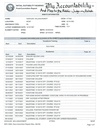
|
2023 apr 5

|
2023 mar 19
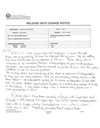
|
2023 mar 5

|
2023 mar 5
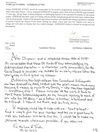
|
2023 mar 5
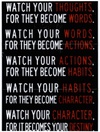
|
More... |

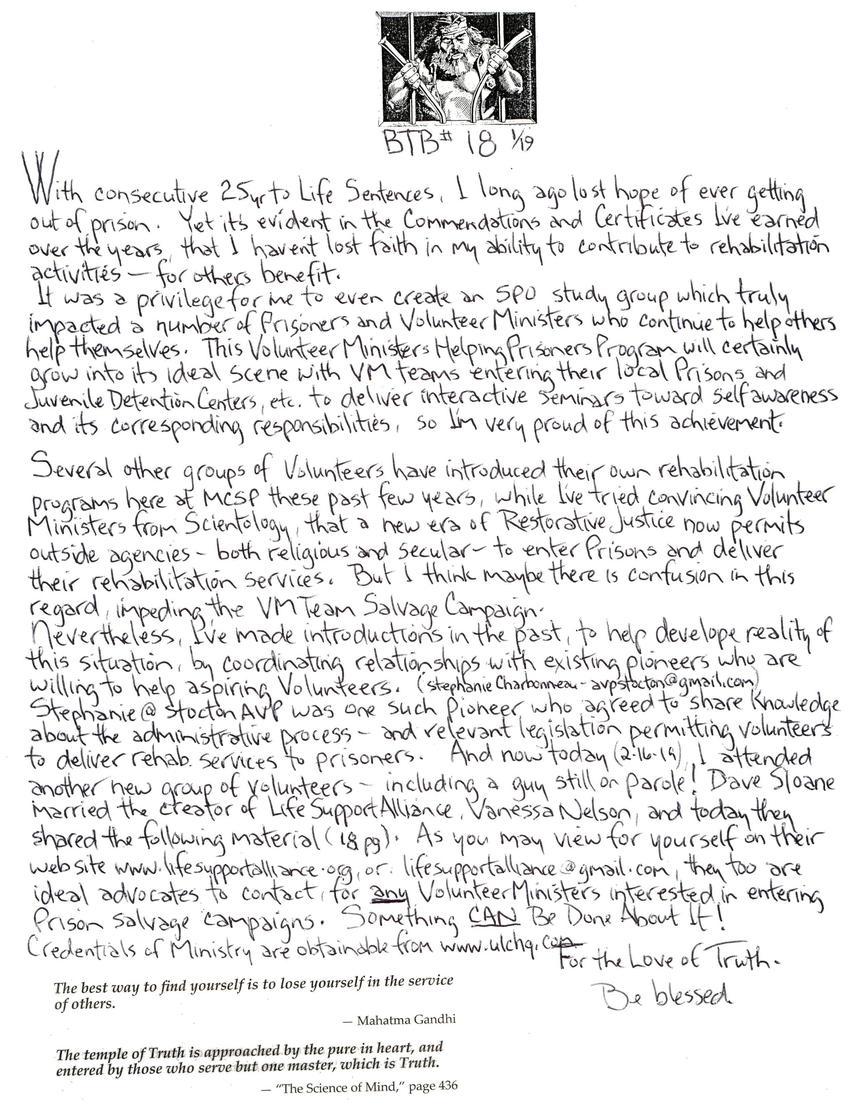
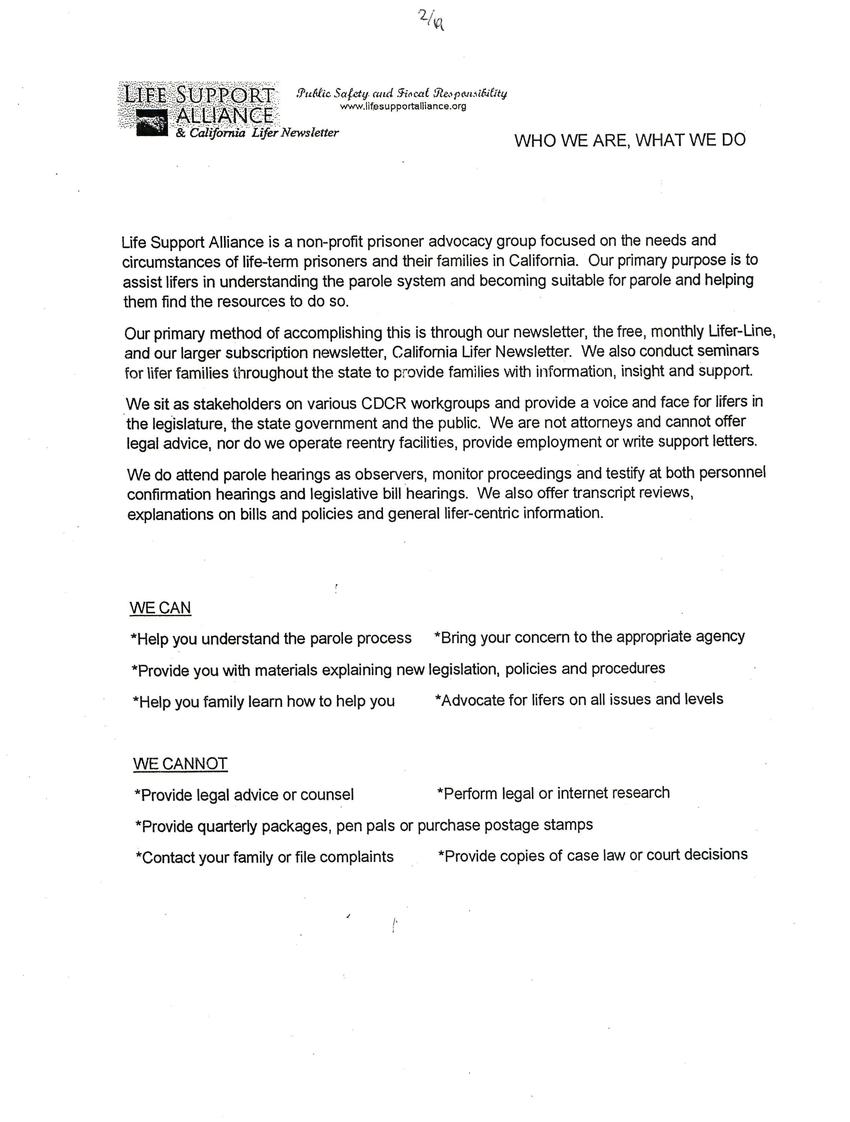
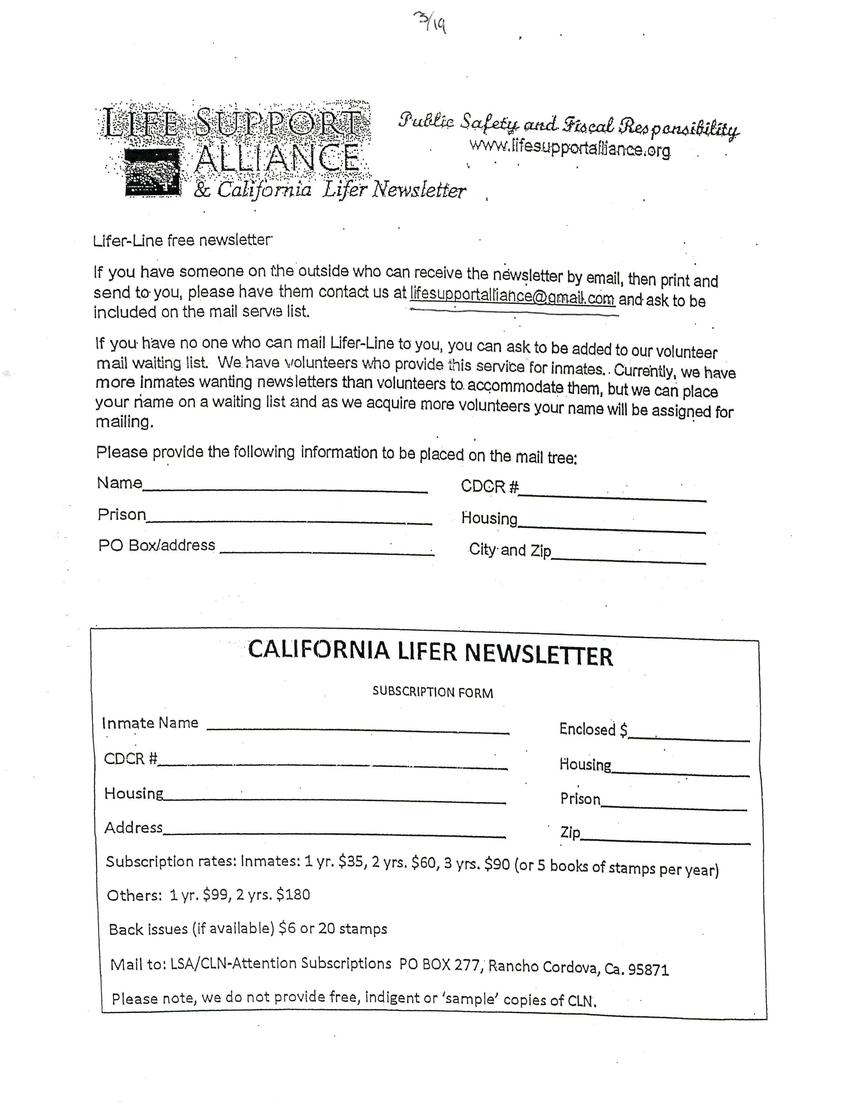
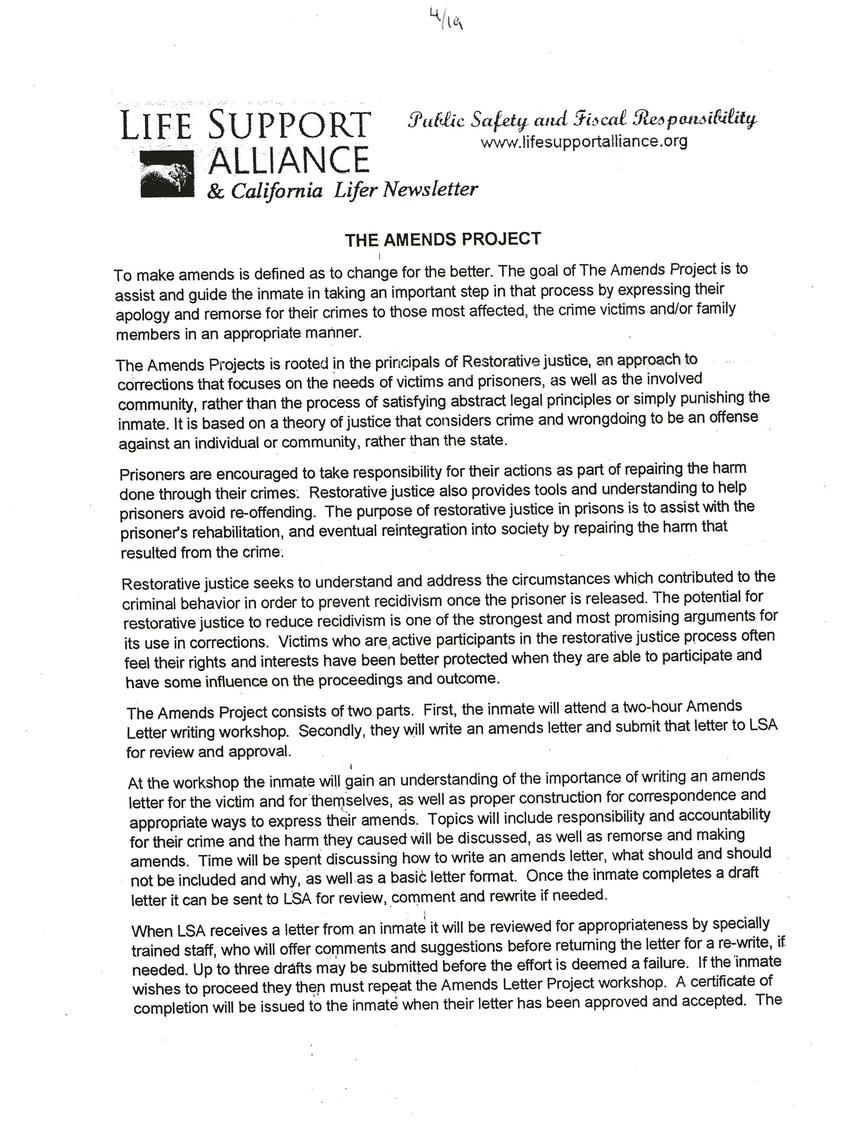
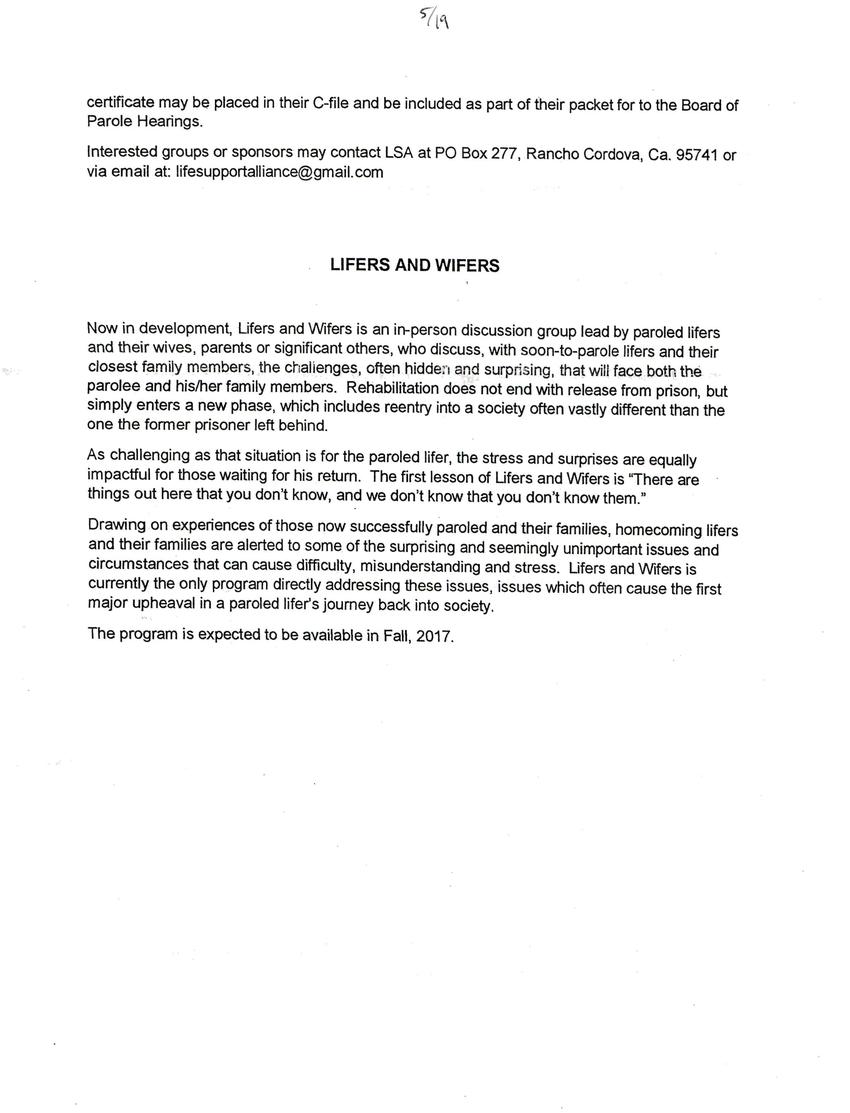
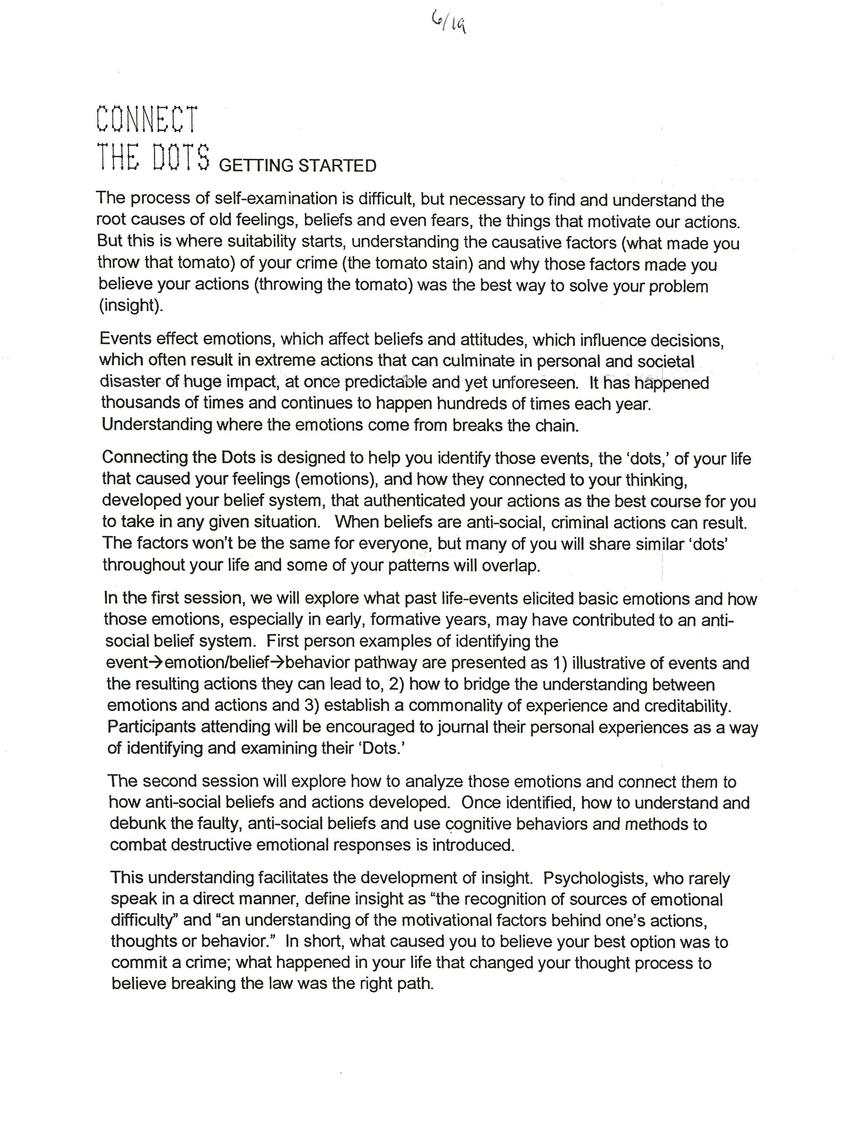
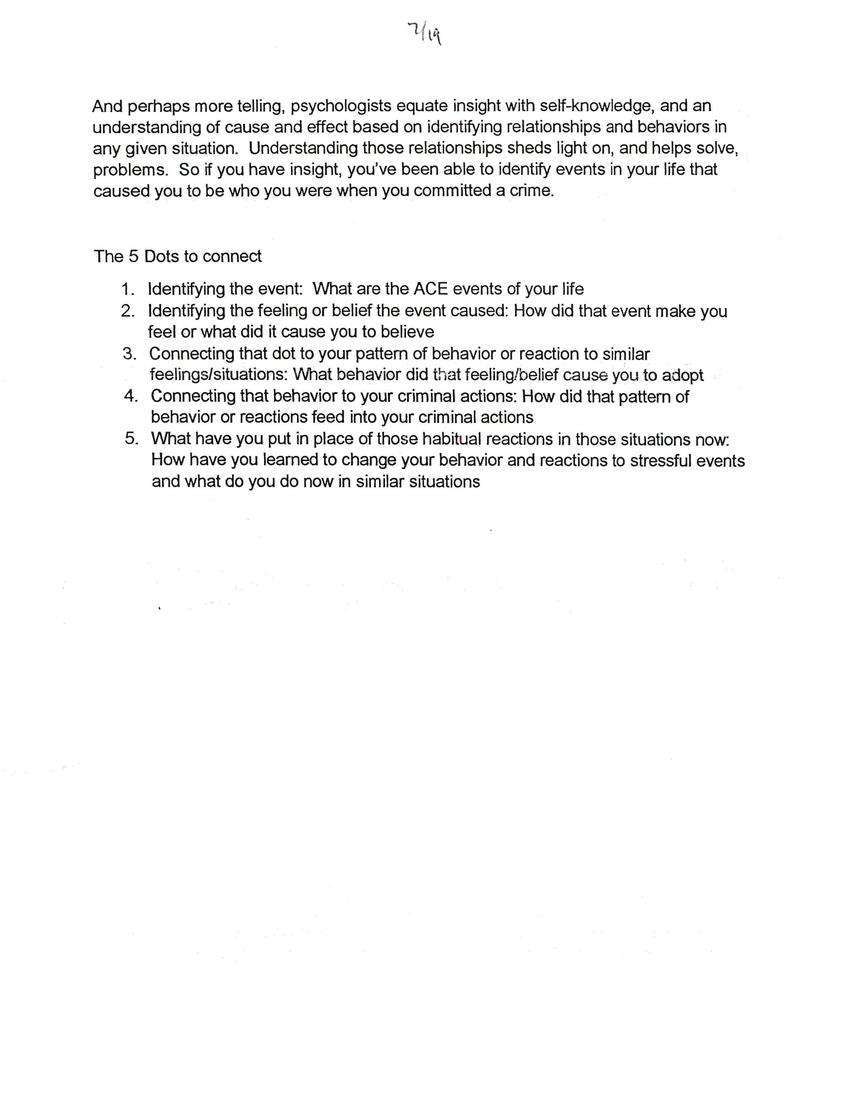
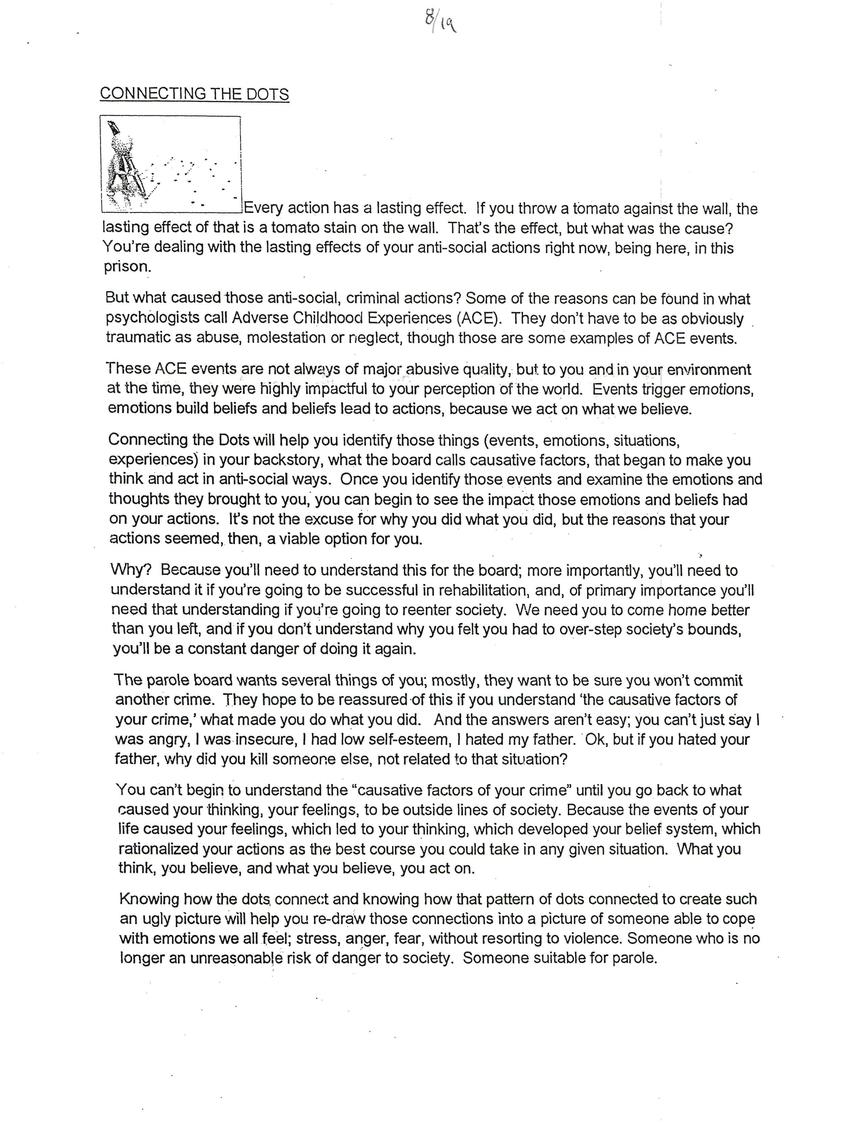
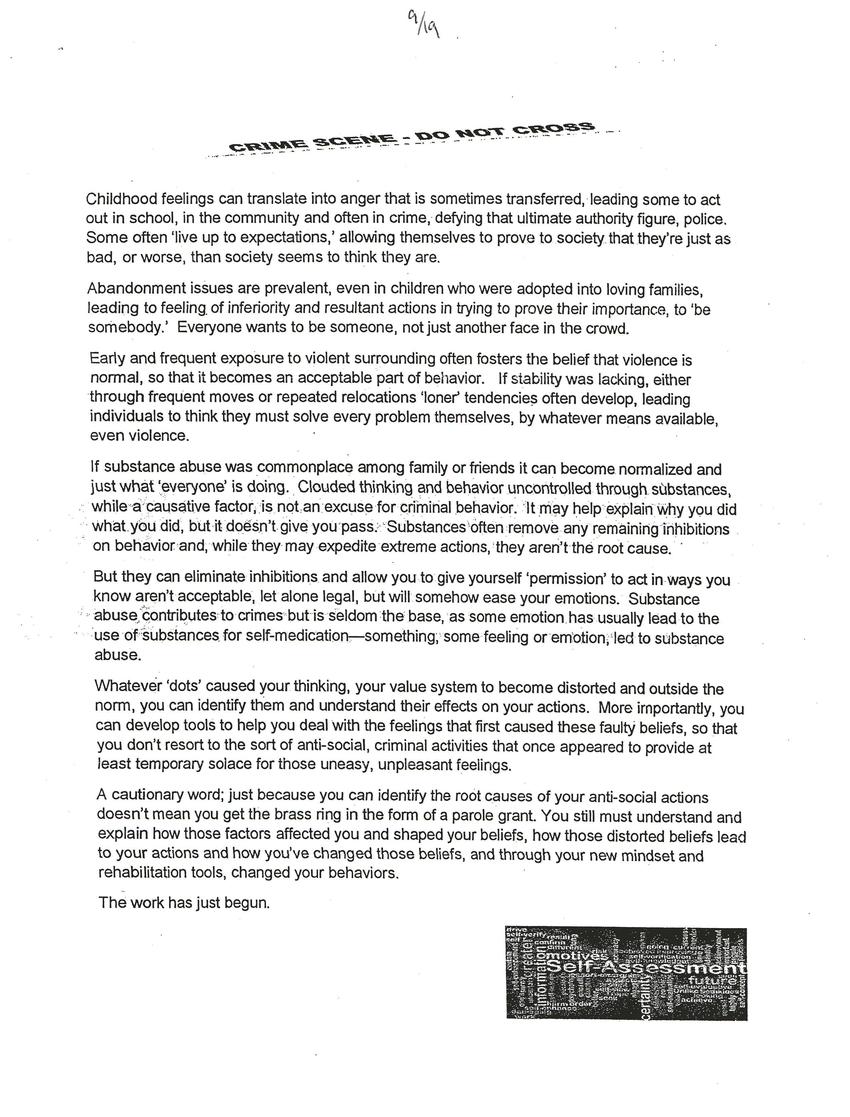
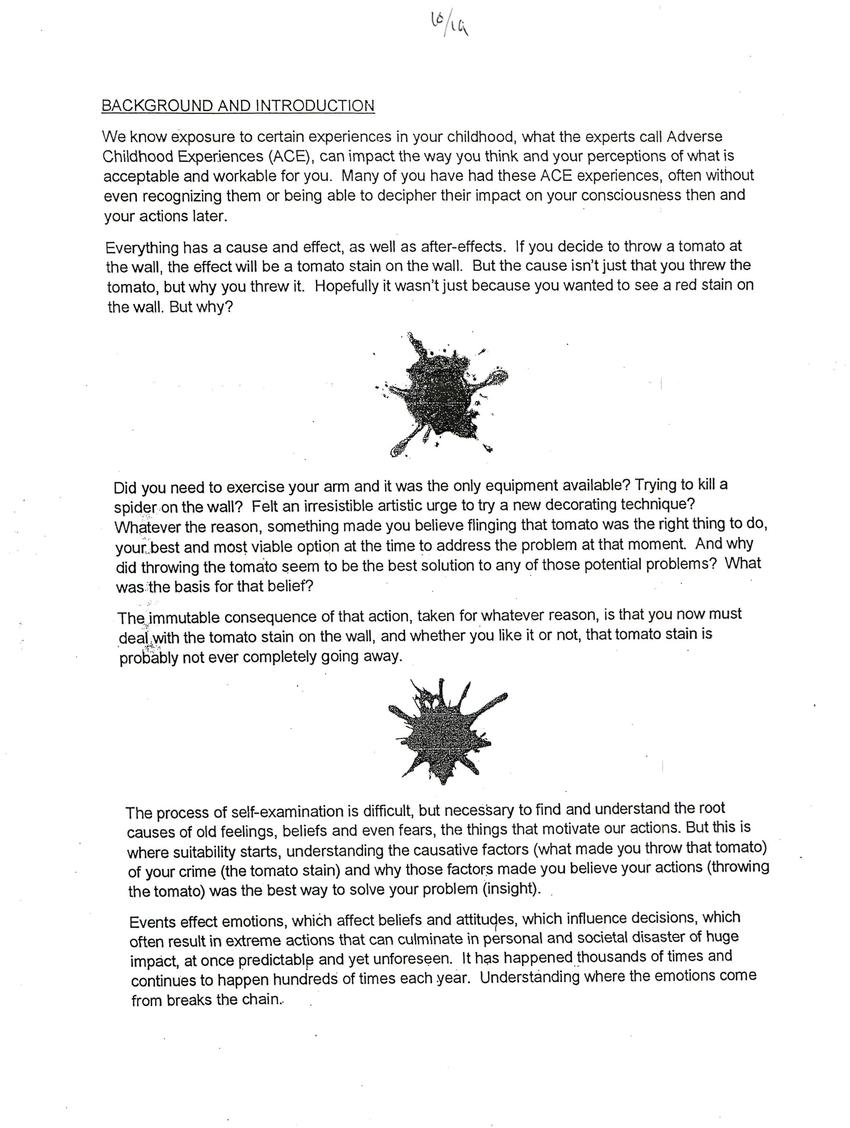
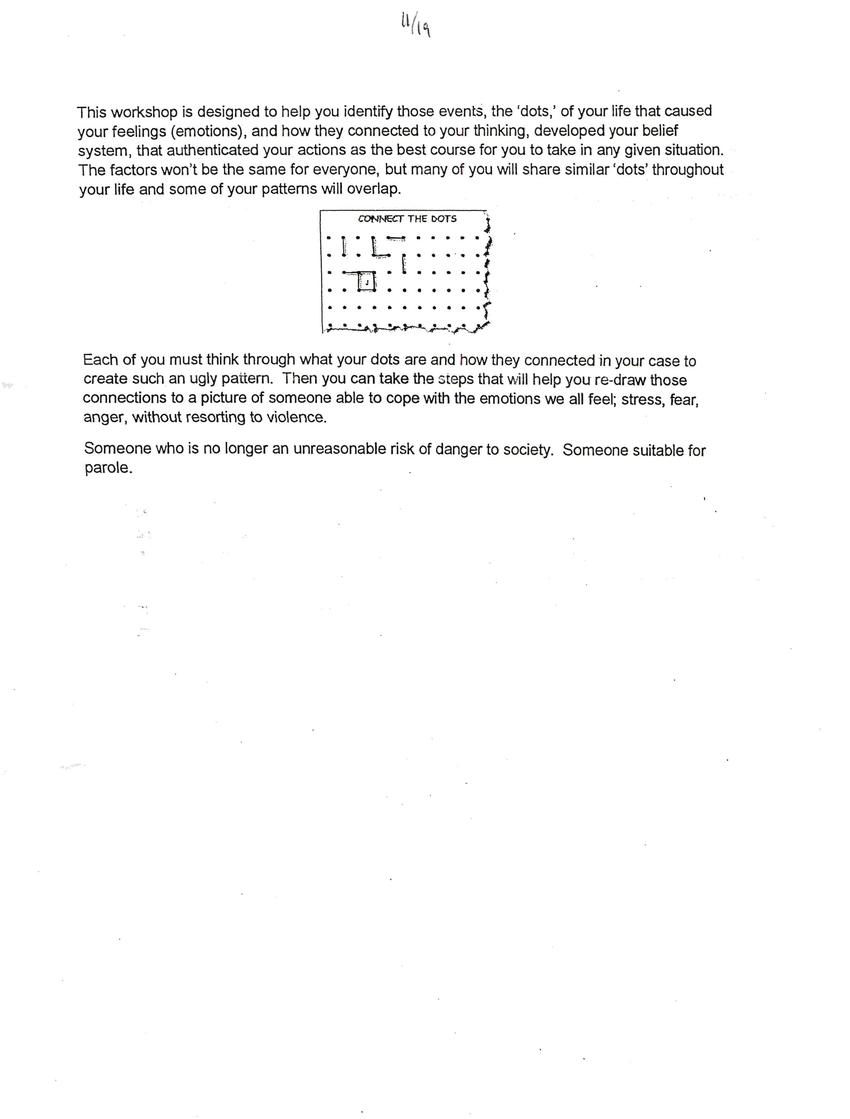
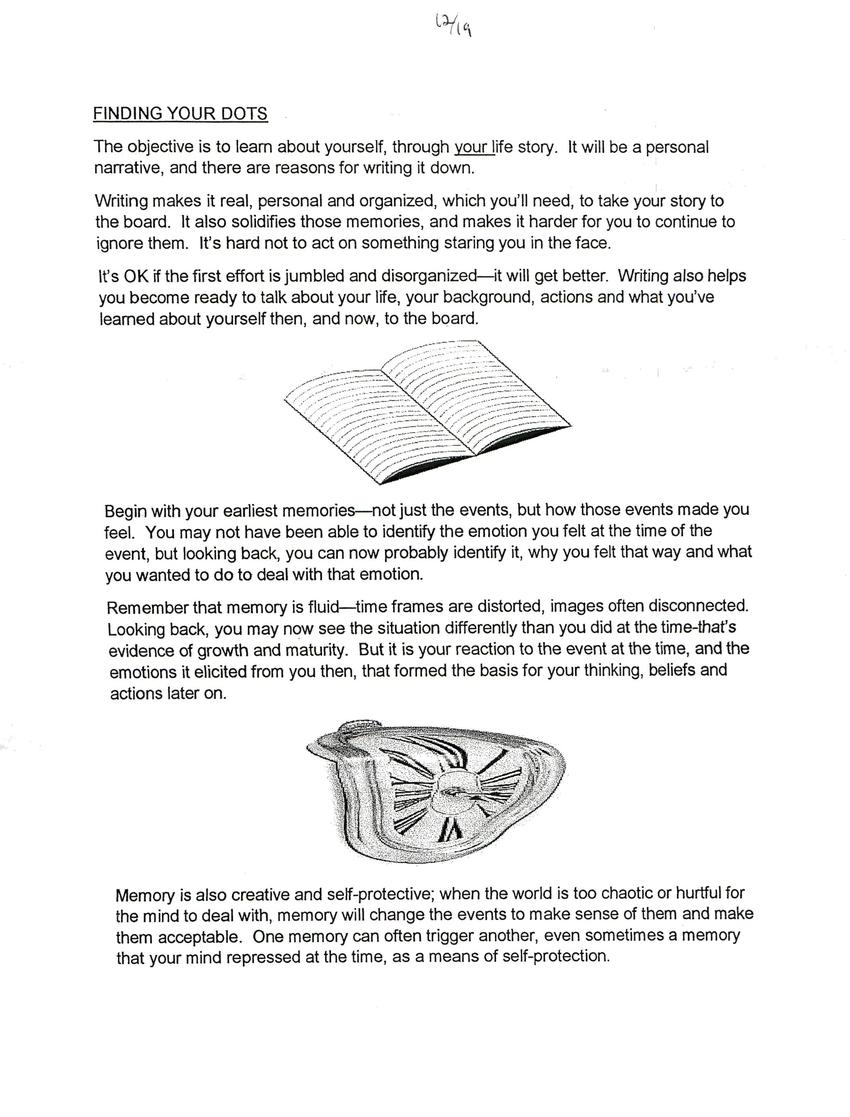
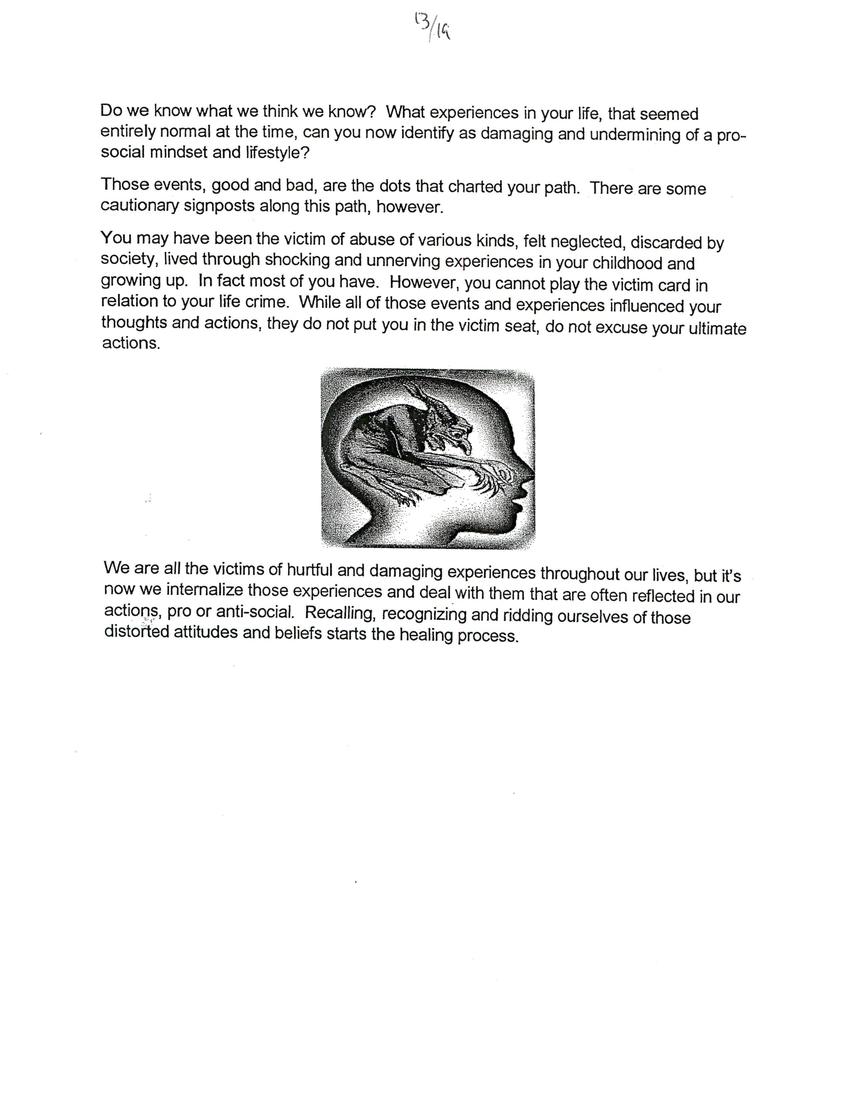
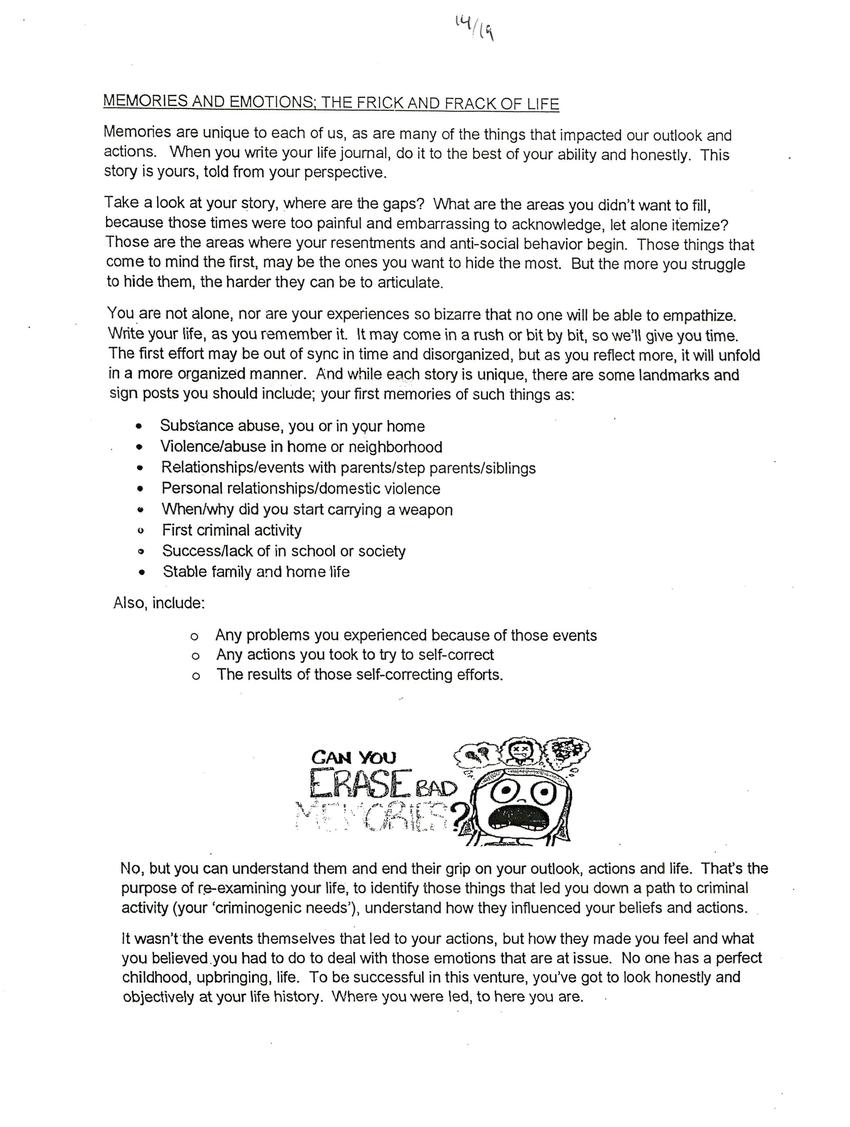

Replies